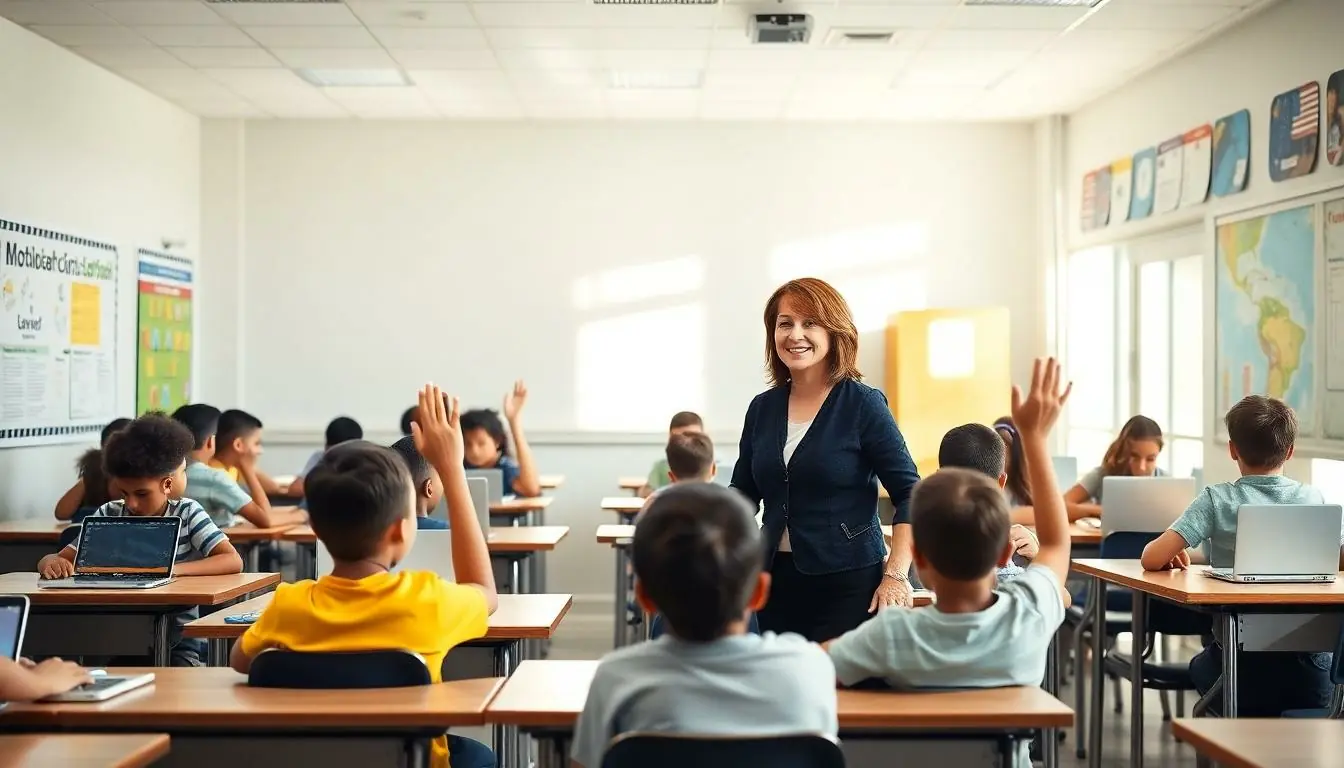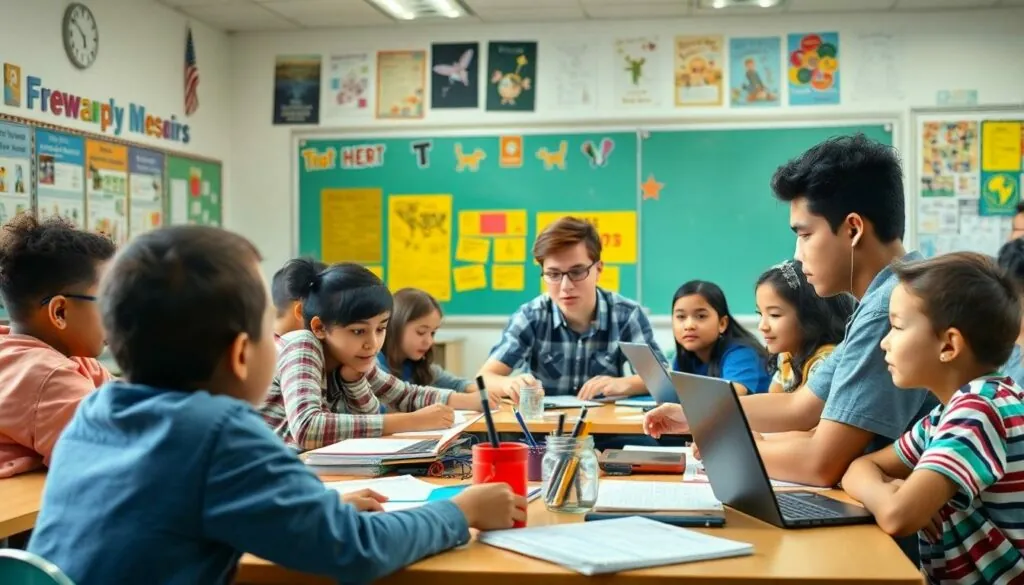Education today faces a wild array of challenges that could make even the most seasoned teacher question their sanity. From juggling outdated curricula to navigating the digital divide, it’s like trying to teach a cat to fetch—frustrating and often comical. As students become more tech-savvy, schools are racing to keep up, but it feels like they’re running a marathon in flip-flops.
Table of Contents
ToggleOverview of Challenges in Education Today
Numerous challenges impact the education system today. Outdated curricula hinder students’ engagement and skills development. Schools struggle to integrate modern technology into lessons, causing gaps in digital literacy. The digital divide further exacerbates inequalities, leaving many students without access to essential online resources.
Teachers face increasing pressure to meet diverse learning needs while balancing standardized testing demands. This pressure creates an environment where creativity may take a back seat to compliance and rote memorization. Additionally, mental health issues among students have risen, complicating the learning process.
Funding disparities significantly affect educational opportunities. Under-resourced schools often lack basic facilities, materials, and experienced staff. As a result, students in these environments receive an inferior education compared to their peers in well-funded institutions.
Communication barriers arise due to cultural and linguistic diversity among students. Some educators require effective training to address the unique needs of multilingual classrooms. Continuous professional development remains vital to ensure teachers can adapt their approaches to meet these challenges.
Increased emphasis on soft skills development has emerged as critical for workforce readiness. Employers today prioritize traits such as problem-solving and teamwork, yet education systems often focus on academic performance without fostering these skills.
Addressing these multifaceted challenges requires collaboration among educators, policymakers, and communities. Innovative solutions are essential to create equitable and effective educational environments.
Socioeconomic Factors

Socioeconomic factors significantly influence education quality and equity. Poverty affects students’ ability to learn, engage, and thrive in academic settings.
Impact of Poverty on Education
Poverty directly impacts educational outcomes by creating barriers to access basic needs such as food, clothing, and shelter. Many students in low-income families face issues like lack of transportation, limiting their ability to attend school regularly. Mental health struggles often arise due to financial stress, which can hinder academic performance. Additionally, limited access to enriching extracurricular activities restricts students’ overall development. Data shows that children from low-income households are less likely to achieve proficiency in reading and math compared to their peers, further perpetuating the cycle of poverty.
Access to Resources and Technology
Access to resources plays a critical role in academic success. Students attending underfunded schools often face overcrowded classrooms and insufficient materials, which obstruct their learning experience. Technology disparities also create a significant gap among learners. While many students rely on the internet for homework and research, those without reliable access fall behind. Reports indicate that approximately 15% of U.S. households with school-age children lack broadband connectivity at home. Such limitations prevent equitable learning opportunities, particularly in an increasingly digital education landscape. Therefore, addressing these disparities is essential to ensure that all students receive quality education.
Mental Health Issues
Mental health issues among students present significant challenges within today’s education system. Increasing pressure contributes to the rise in stress levels among learners.
Increasing Stress Among Students
Students experience heightened anxiety due to academic pressures, family expectations, and social dynamics. Standardized testing adds to the stress, often overshadowing learning. Many feel overwhelmed as they balance various responsibilities, including extracurricular activities and part-time jobs. Statistics indicate that about 1 in 5 students report experiencing anxiety disorders, further complicating their educational journey. Depression and burnout also contribute to declining academic performance and engagement. With the growing importance of mental health awareness, addressing these concerns becomes essential for fostering a supportive learning environment.
Support Systems in Schools
Effective support systems play a crucial role in addressing mental health needs. Schools increasingly incorporate school counselors and mental health professionals to assist students facing challenges. Training staff in mental health awareness enables them to identify issues early. Programs promoting social-emotional learning help students develop coping strategies and build resilience. Collaboration between educators and mental health advocates strengthens resources available to students. Creating a safe atmosphere where students feel comfortable seeking help encourages open conversations about mental health. These efforts enhance overall well-being and academic success, demonstrating the vital link between mental health and education.
Curriculum and Pedagogy
Curriculum and pedagogy face significant challenges in today’s education system. Updating curricula to reflect modern society proves essential for meaningful learning experiences.
Relevance of Curriculum to Modern Society
Curricula often lag behind societal advancements. Outdated subject material fails to engage students, limiting their ability to apply knowledge in real-world contexts. Information technology integration, for instance, is crucial as students grow more adept at using digital tools. Incorporating current events and global issues helps students grasp the broader implications of their education. Employers increasingly prioritize skills relevant to contemporary workplaces, so teaching methodologies must adapt. Engaging students with project-based learning fosters critical thinking and creativity, essential in today’s rapidly changing job market.
The Need for Teacher Training and Support
Teacher training and support require significant investment to enhance educational outcomes. Continuous professional development ensures educators remain informed about new methods and technologies. Training programs focused on differentiation strategies address diverse student needs. Schools must provide resources that allow teachers to implement innovative practices in the classroom. Mentorship programs can also bolster teacher confidence, enabling them to navigate challenges more effectively. Supportive administrator roles play a critical part in creating an environment where teachers thrive, leading to improved student performance. Prioritizing teacher well-being not only impacts classroom effectiveness but directly influences student success.
Policy and Governance
Education policy and governance shape the overall environment in which students learn. Various factors, including funding and governance structures, significantly influence educational quality and equity.
Education Funding and Resource Allocation
Funding disparities affect student opportunities directly. Under-resourced schools often lack basic facilities and experienced educators, which leads to inferior educational experiences. Approximately 90% of public school funding comes from local sources, causing significant variability in resource allocation. Communities with higher property values can provide better support, while low-income areas struggle. Underfunded schools may face overcrowded classrooms and limited access to essential materials. Consequently, students in these settings miss opportunities that their peers in wealthier districts enjoy.
Standardized Testing Concerns
Standardized testing raises concerns about its impact on educational practices. Emphasis on test scores can lead to a narrow curriculum focusing on rote memorization rather than critical thinking and creativity. Approximately 70% of educators feel that standardized tests do not adequately measure student learning. Students under pressure to perform may experience heightened anxiety, which negatively impacts their overall engagement. As a result, valuable skills such as problem-solving and collaboration, which are essential for success in the workforce, often take a backseat. Schools must reconsider the role of standardized testing to create a more balanced approach to assessment and student development.
The education system faces a complex web of challenges that require urgent attention. From outdated curricula to significant mental health concerns, the need for reform is clear. Addressing funding disparities and ensuring equitable access to resources can help bridge the gap for disadvantaged students.
Moreover, fostering an environment that prioritizes creativity and critical thinking over standardized testing will better prepare students for the future. Collaboration among educators, policymakers, and communities is essential to develop innovative solutions that meet the diverse needs of today’s learners.
By embracing change and investing in both educators and students, the education system can evolve to create a more inclusive and effective learning experience for all.





